Write Us
We are just a call away
[ LET’S TALK AI ]
X
Discover AI-
Powered Solutions
Get ready to explore cutting-edge AI technologies that can transform your workflow!

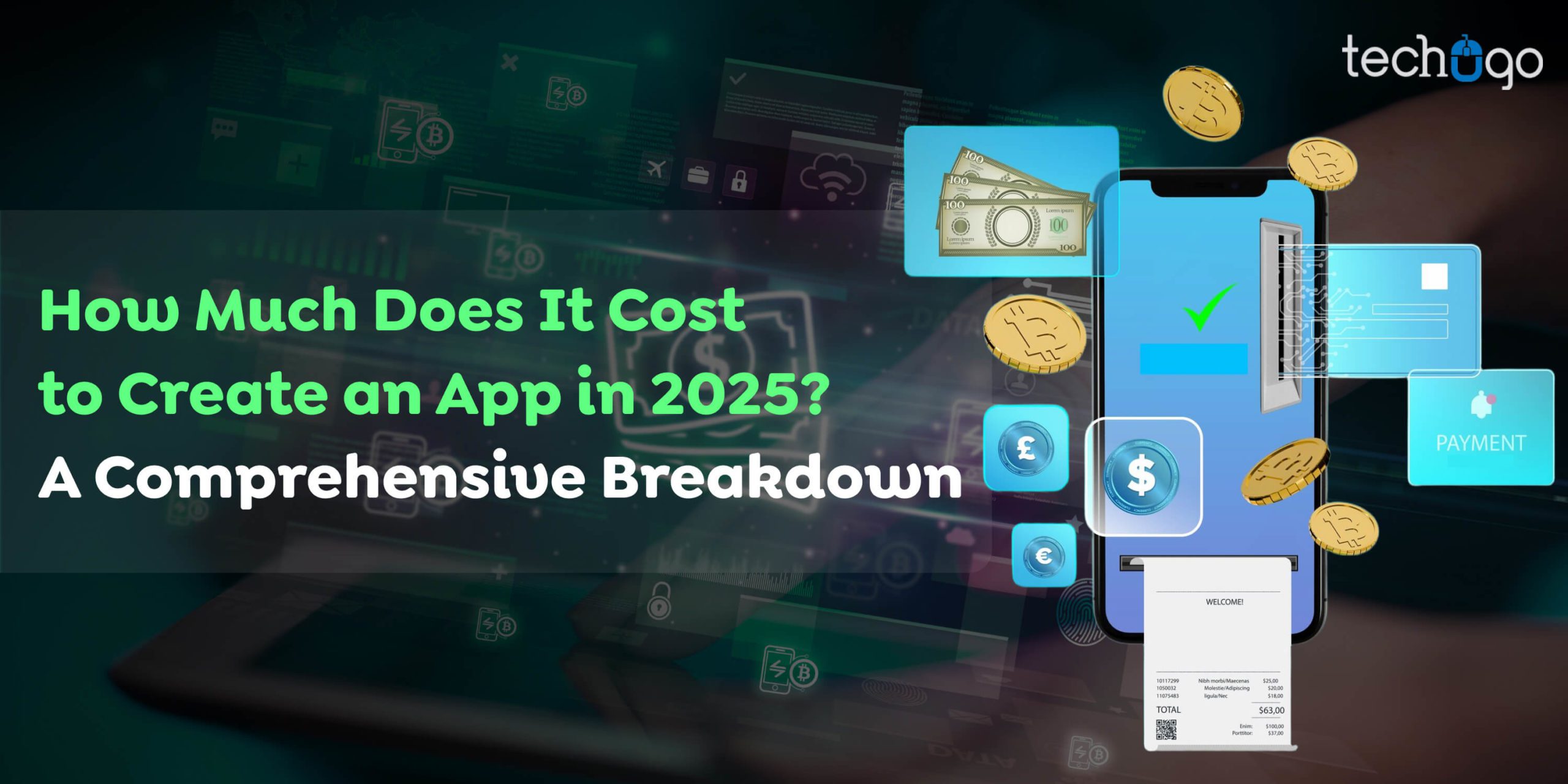
Building an app starts with an essential question: “How do you find the right developer?” The answer to this question can shape your journey from idea to implementation. In today’s rapidly evolving digital landscape, mobile apps are no longer optional—they’re necessary for businesses aiming to grow and thrive.
Here’s an eye-opening fact: mobile apps generated a staggering $935 billion in global revenue last year. This highlights how powerful a well-designed app can be in driving business success.
But finding the right developer isn’t just about skills or expertise; it’s also about understanding factors like the cost of mobile app development. After all, balancing your budget with your app’s functionality and goals is crucial for long-term success.
Curious about the steps involved? Let’s dive into the process and empower you to take the first step toward creating something exceptional!
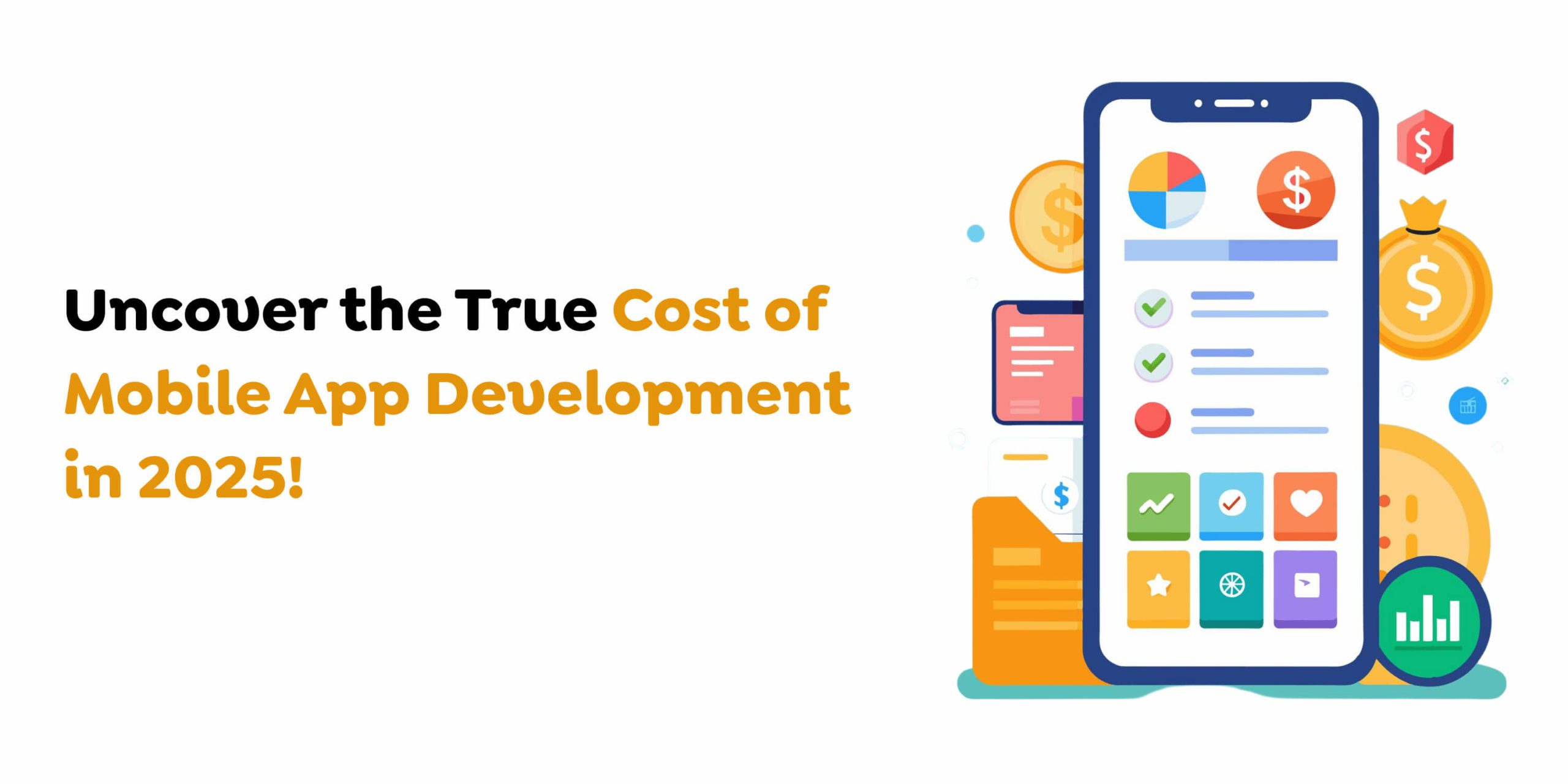
We are often asked the following questions when assessing mobile app development costs. Or “What is the cost of app development companies versus hiring freelance app developers?”. Or “How much should my mobile app budget be?”
The actual price remains unknown to us all.
People cannot determine software development expenses yet require specification clarity to establish budget estimates. The cost of application development depends on multiple elements, and various elements influence the budget of every application development initiative. We hope you’ll find this article helpful in determining app development costs.
Now, let’s discover the key factors that impact the mobile app development cost.

App development costs are not driven by just one or two factors. So, we want to investigate and uncover all factors that could affect the price of mobile app development, and we’ll share them with you today!
The number of features you wish to implement is one of the main reasons app development costs rise so quickly. An app feature is an action that the app must perform to achieve its intended results. Therefore, you must determine how long it takes to create each component. This will help you estimate the correct cost.
However, different digital agencies and software companies have their own ways of judging. The app development cost depends on your project details and technical and business requirements. They will then combine the information and create a quote. They will usually show you the list of critical features, the backlog of features (where all the other elements are), and the development complexity.
In some cases, however, the estimate or quote may need to be more accurate and may exceed your expectations. Two scenarios are possible.
First, the first is a company that could be more reliable in providing a project estimate due to low-quality service. These companies usually seek to get money from you and sign a contract. You can avoid such situations by looking at their reviews, reviewing the mobile apps they have created, and occasionally even contacting their customers.
This is the second scenario in which the project scope has changed due to changes made along the way. These are the three simple rules to avoid unexpected circumstances and stay within your budget.
Are you considering iOS mobile app development? You may be interested in developing it for Android OS. You should know the costs of developing mobile apps for Android and iPhones.
App owners should consider factors like the market share of iOS and Android, smartphone proliferation, and prevalence when choosing which platform to start with. The most important thing is that development processes are different for each forum. They support other programming languages and use various development tools.
The question is: Is there an actual cost difference between Android and iOS applications? The truth is that there is no cost difference between iOS and Android apps. There is no significant cost difference if you develop an app on one of these platforms. However, if you want to create an app that works on multiple platforms, expect to pay twice the price. Another issue is that each medium requires a different team, which can increase the cost of app development.
Your IT outsourcing location has a significant impact on app development costs. For example, the development costs in the United Kingdom differ from those in the United States.
Statista’s 2015 survey revealed that the three top countries for mobile app development are Australia, North America, and Singapore.
Let’s now look at each role in the app development process and how they may impact the overall app cost.
You should know the importance of conducting a business analysis if you have ever worked with an outsourcing agency before you estimate the app development cost.
Business analysts are responsible for gathering requirements and identifying business and technical problems. They also conduct competitive analysis and define project value. This serves as the background for the planning phase.
Concrete planning is crucial to avoid costly scope changes and misinterpretations throughout development. The work of business analysts affects the cost to develop an app.
Today, people put beautiful designs on top. However, it’s almost only possible to create a great product with the help of a skilled designer who specializes in UI/UX design.
Designers are responsible for researching similar applications, analyzing user preferences and pain points, creating wireframes, and designing the final design. Include the rates for UI/UX designers in your app’s cost breakdown.
Depending on which platform you will publish your app, you will need several app developers. They will be responsible for developing and publishing the app while considering all technical and business peculiarities.
QA developers run the regression, load, and smoke tests to ensure stability. They also validate the UI and any other app components to ensure compliance with the specifications. If some testing steps still need to be completed, it can impact app development costs.
The PM coordinates all efforts and ensures that the product meets all requirements. The appropriate management approach can significantly affect the cost of mobile application development.
Last, it would help if you considered the costs of maintaining an app. Setting aside 15% to 20% of your annual budget for maintenance options for your app is common. Maintenance costs can include bug fixes, new functionality, and moving your app to a new OS version. The cost of your features and their complexity will also affect the price.
App maintenance is essential, even if there are no plans to expand the application or add functionality. As the application gets more complex, these costs can rise.
These are the core maintenance options:
This is why collaboration with your technology partner and development team continues after the product is released. Software development is an ever-evolving business. Therefore, each software company has its post-release support policies.
Now that we know the factors let’s explore the mobile app development cost optimization techniques.
Also Read – How Much Does React Native App Development Cost in 2025?
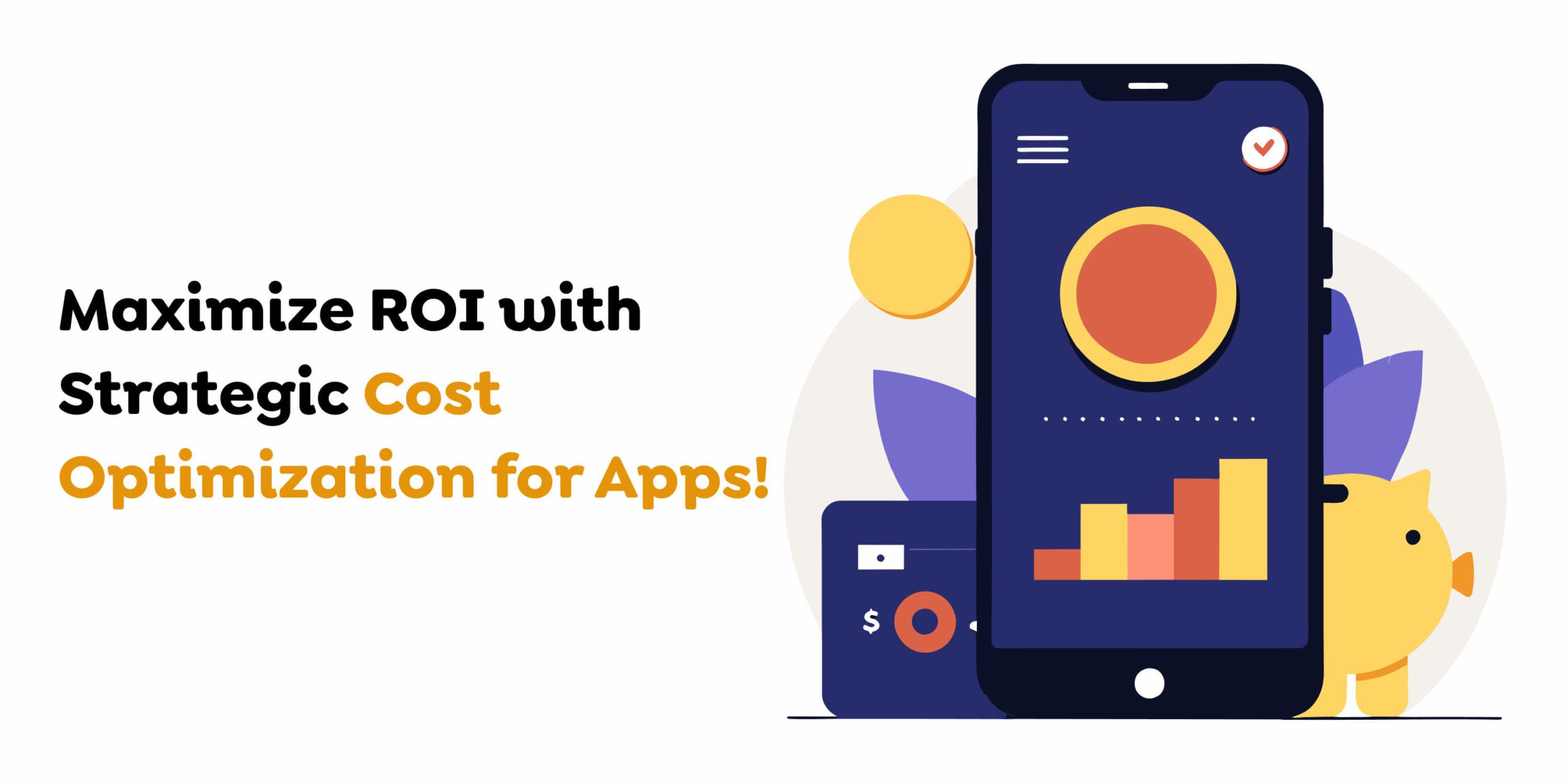
We have given you an estimate of the costs you will incur for your mobile app development project. However, there are many ways to reduce them. It won’t affect the quality of your app. It will only benefit you. Look at some of the most critical optimization techniques to decrease app development costs.
Before you start to develop an app, the first thing you need to ask is who your target audience is. This means you need to analyze their social profiles, market needs, goals, and many other questions. These questions will help you create a picture of your customer. You’ll now be able to move on to the next stage of our priority list.
You are prioritizing all the features that are important to you before you start the development process or outsource your team. Of course, creating the perfect app you envision won’t be possible. However, you’ll not only be able to increase your business’s value quickly, but you will also be able to make accurate project estimates and get feedback from potential customers.
You can leave the features you don’t need in your backlog until the core product development kicks in. This allows you to gradually invest in your time and produce a minimal version. However, it may prove too risky to support all your capital in app development at once. Two main reasons are the risk that your app will fail in your target market and because of the dynamic trends within your target market.
Once you have gotten to know your customers and created your priority features list, it’s time to combine your research with a prototype of your app. A prototype that only contains core features is an intelligent and wise strategy. After releasing it to your target audience, your main goal will be to gather their feedback. You’ll likely change the prototype more than a fully-fledged app.
Once you have left the MVP zone, it’s time to start actively creating and developing a mobile core app. Keeping to the feature list you have already added to our backlog is essential. It will extend your deadline and considerably stretch your budget.
Why outsource? It can bring you more financial benefits when your app development projects are completed. It is much cheaper to hire a local developer team to build an app than to create one. You don’t need to pay additional taxes, perks, or software. You can also take advantage of the low-cost services an outsourced development team offers to produce high-quality products.
Moving forward, you must be wondering what the top things to consider when choosing a mobile app development company in UK are.
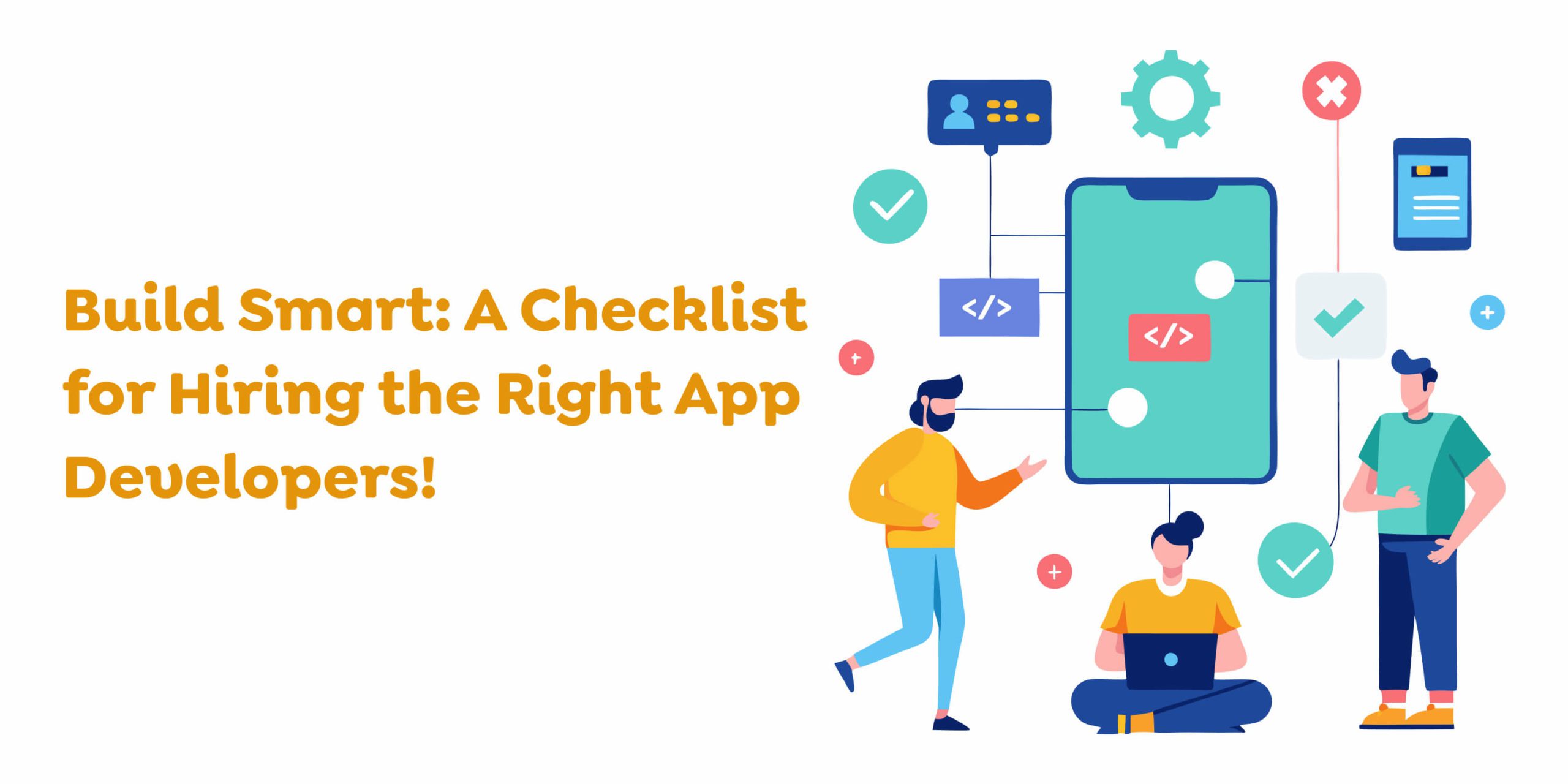
Many IT outsourcing companies offer different services. So, how do you find reliable partners capable of delivering high-quality products?
It’s better than nothing to do extensive research on the IT companies you are considering and ensure they meet your product requirements.
These tips help you choose the right IT company for your project and build the app you need.
It is important to identify the requirements of your application and determine how much funding you have available to help it develop. Also, establish the timeline for development. Determine the platforms that will support it.
It is also useful to learn about the latest technologies. This will help you understand what type of app you need.
This will make it easier to choose a mobile app development company in UAE.
Choose from software development companies that have a track record and offer a range of services to ensure you get highly skilled specialists. This company will provide all the resources you need to create an application.
Ask them important questions after you have selected the right app development agency. Ask them about their experience developing apps, briefly describe your app idea, and get their opinions on your project. This conversation will enable you to understand how app developers in this company came up with your idea and what they are willing to do to implement it.
Ask company representatives to name the most popular apps they’ve created and then carefully examine them.
Consider whether or not you like the app’s design and whether they are functional and easy to use.
Being unique is key to the success of any application. So, are there any unique qualities to the apps created by this company, or are they just ordinary?
It is important to discuss privacy and security concerns about your mobile app and data that are related to your business. Developers should have a confidentiality agreement in place to protect their privacy. Talking about intellectual property rights before you start work is also a good idea. Before you start working on a project, discussing these and other aspects of protecting personal data is essential.
Also Read – How to Hire a Full-Stack Developer in 2025: Best Platforms, Costs & Key Benefits

After you have compiled a list of features, it is time to start looking for top app developers to create your app.
It isn’t easy to decide whether to hire a freelance developer or sign a legal agreement with an application development company. Each decision is based on your project details and is appropriate for different circumstances.
Let’s take a look at the details of each job choice.
If you are looking for app developers who can work remotely for your company or build an in-house team, this option may be for you. This is the best option if you have to manage multiple projects at once.
In-house teams are often used by businesses that want to improve communication and control their employees. Working with an in-house team is easy because there are no time zones or language barriers.
This is a cost-effective but straightforward choice. However, hiring local experts in the US or Western Europe for your internal team might be expensive and complicated.
Because you don’t need to rent office space or equipment, working with freelance mobile app developers can be cheaper than hiring an in-house team. However, it can only perform short-term tasks and software projects, such as creating a website or repairing a shopping cart.
If you’re creating an app from scratch, a freelance app developer can only handle some of the mobile app development lifecycles. In this case, you must hire a few independent software developers, UI/UX designers, and QA engineers.
Because of team fragmentation, hiring freelance app developers to work on a large project can prove dangerous and costly. So, instead, you will need to manage the project or hire one.
Finding a reliable freelance app developer could also be challenging. Some offer a project with bugs, while others may give up after a few weeks to get a better deal. You can also find an app developer via a freelance platform.
You can choose to group freelancers within a single area of your office. As a result, you can coordinate the development process and improve developer interaction.
Consider outsourcing software development to a company or adding an app developer from that company to your team (whether you have an idea or a ready-made specification). Both cases will help you speed up time to market, reduce project costs, and increase product quality.
This solution doesn’t require you to rent an office or incur any additional costs. Outsourcing businesses can provide the best app developers available. They also manage the development team and deliver the product.
If you have limited funds, an app developer can be found abroad. You can also conduct market research to find the best outsourcing locations for your business.
When you choose to outsource companies, there are potential communication and time differences that could be very significant. Experienced vendors employ professionals who are fluent in English and have flexible communication schedules to ensure client comfort.
Unlike in-house employees, you will receive exceptional service for a fair price in the short term.
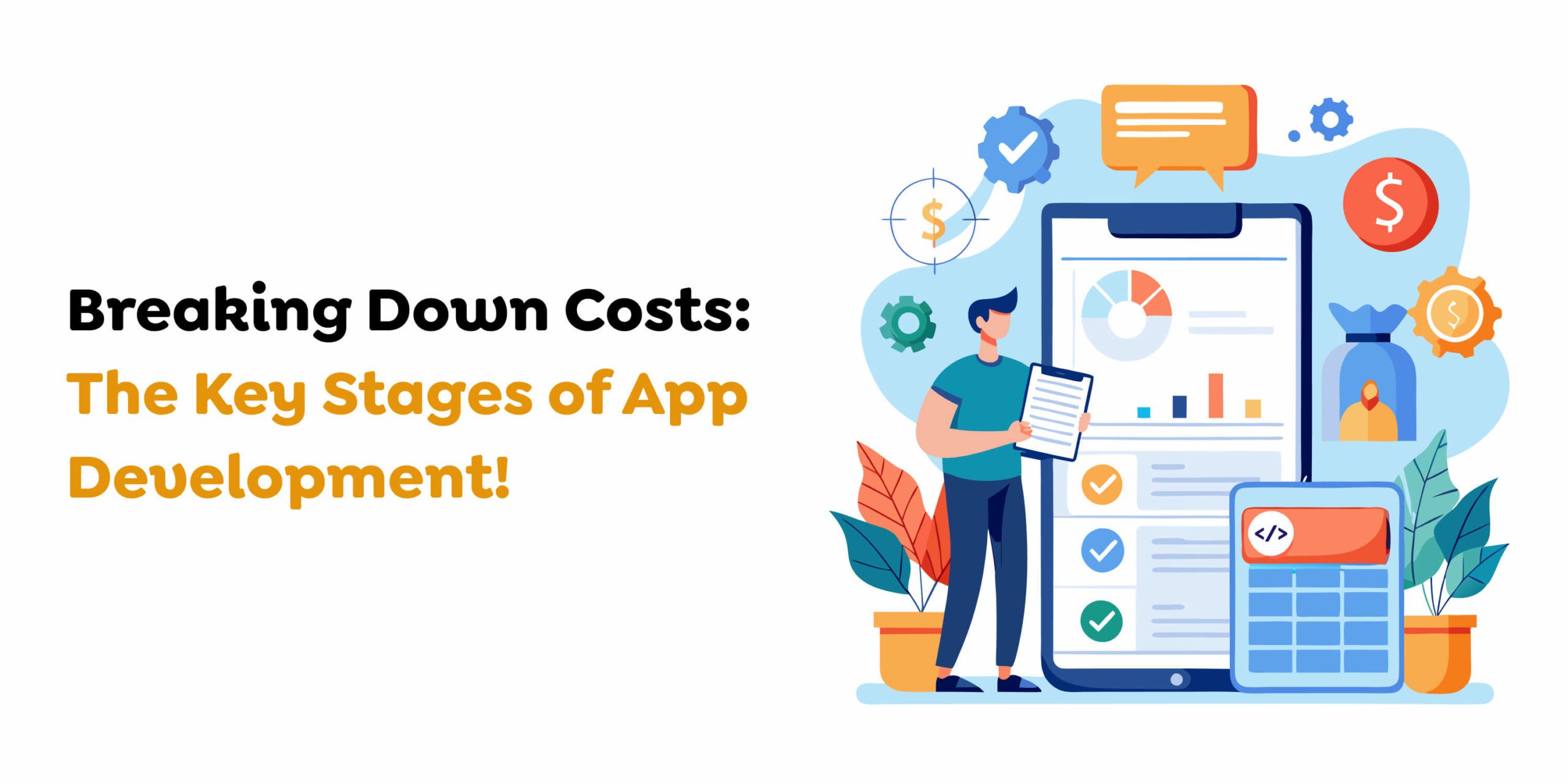
Without a clear understanding of the mobile app development process and the costs associated with each stage, the answer to the question, “How much does it cost for an app to build?” would remain incomplete.
Software development can be divided into five main stages:
Let’s examine how each stage affects the final cost of developing an app.
The Discovery stage, also known as analysis and planning, is also called the analysis stage. This is the first step of a top app development company. Research shows that 70% of companies begin with project planning and analysis. This involves the work of UX/UI designers, business analysts, software architects, product owners, and other professionals.
The discovery stage can cost anywhere from $5,000 to $25,000, sometimes even more. Planning and analysis can take between 2-5 weeks for most projects.
This stage of mobile app design is all about creating user flows. It outlines how users will interact and the interface. This is crucial for creating a user-friendly product that will be simple to use and meet their needs.
Designing an app can cost you anywhere from $5,000 to $50,000. Your application’s complexity and number of screens will determine the price.
What is the cost of building an app? You can see that many factors can affect the cost of building a mobile app.
App development costs are between $5,000 and $10,000. For a more complex mobile application, expect to pay between $50,000 and $75,000. This will add up to $300,000.
App development costs include the testing phase and deployment.
App development is only complete with quality assurance and testing. This is the phase that ensures your app is ready to go for customers and does not have any issues. It offers a great user experience.
App testing and QA services typically cost you between $5,000 and $10,000.
It is not easy to answer the question “How much does an app cost to build?“ because many factors can influence your decision. It depends on the features you choose to outsource and the company that you work with. A small to medium app development company can charge between $25,000 to $115,000 for development.
Once the app is live, regular updates and maintenance are essential to ensure its smooth performance and user satisfaction. This phase involves monitoring app performance and crash analytics to address issues promptly. Additionally, the app must be updated to remain compatible with new operating system versions, ensuring it works seamlessly across devices. Incorporating new features or modifying existing ones based on user feedback helps keep the app relevant and engaging. Security patches and updates are also critical to safeguard user data and maintain trust. The cost of maintenance typically ranges from 15% to 20% of the app’s initial development cost annually. For instance, if an app costs $100,000 to develop, its yearly maintenance expenses could be between $15,000 to $20,000.
Now, let’s explore the key benefits of building an app for your business.
Also Read – How Much Does it Cost to Create a Mobile App in Dubai in 2025?

Whether you’re a small startup or an established enterprise, a well-designed app can provide several benefits that boost your brand, user engagement, and overall business growth. Here are some key advantages:
1. Better Customer Engagement
Apps allow direct communication with customers through notifications and in-app messages, fostering higher engagement and retention.
2. Increased Brand Visibility
Having an app means your brand is always on your customer’s device, keeping you top-of-mind and boosting recognition.
3. Streamlined Communication
A mobile app simplifies communication with customers, whether for support, feedback, or promotions, making it more efficient.
4. Higher Sales and Revenue
With easy transactions and personalized offers, apps can drive more purchases, reduce cart abandonment, and improve conversion rates.
5. Enhanced User Experience
Mobile apps provide a seamless and personalized experience, making interactions smoother and improving customer satisfaction.
6. Valuable Insights
Apps help track user behavior, providing valuable data for personalized marketing and optimizing services.
7. Competitive Advantage
An app sets you apart from competitors by offering unique features and better customer service, positioning you as a market leader.
8. Cost-Effective Marketing
With low overhead costs, apps can serve as an efficient marketing tool, offering promotions and advertisements directly to users.
9. New Revenue Streams
Mobile apps open up opportunities for subscription services, in-app purchases, and memberships, adding additional income sources.
Building a business app enhances customer relationships, boosts sales, and provides valuable insights, making it a strategic investment for long-term growth.
Monetizing an app is crucial for its success. Here are some of the most effective ways to generate revenue:
1. Advertising: One of the most common methods, app developers partner with third-party advertisers to display ads. Apps earn revenue based on user interactions such as clicks or impressions.
2. Freemium Model: This model offers essential features for free, with premium upgrades available for a fee. It attracts a large user base, monetizing top-tier users through paid features or subscriptions.
3. Subscription Model: People who use the application pay periodic fees through regular monthly or annual payments to unlock its fundamental functionalities. The subscription approach provides continuous revenue flow, which leads to extended user retention.
4. Sponsorships: Partner with companies or brands that align with your app’s target audience. In return, you promote their products, display their logo, or offer direct links to their services in exchange for financial compensation.
By integrating one or more of these strategies, you can maximize your app’s revenue potential.
Many factors influence how much mobile app development cost in 2025. These include the app’s complexity, the developer team’s expertise, the features you aim to include, and the type of app you are building. Achieving success, however, isn’t just about building an app; it’s about making your development process efficient, often with the help of an experienced external team.
Get in touch with Techugo, a mobile app development company in USA, to get more insights.
Write Us
sales@techugo.comOr fill this form